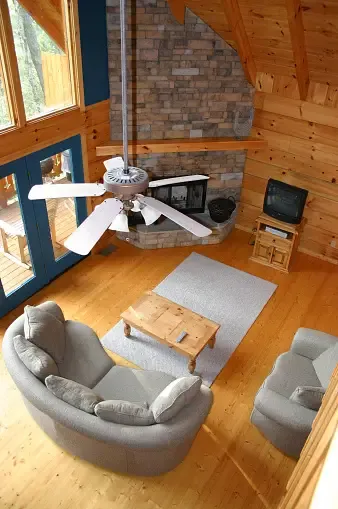
How Much Does it Cost to Install a Ceiling Fan with Remote?
Installing a ceiling fan with a remote control can be a smart and stylish addition to any home. Whether you’re looking to cool down a room, add some ambiance, or simply make life a bit easier with remote-controlled convenience, understanding the costs involved is crucial. In this blog, we’ll break down the factors affecting the cost of installing a ceiling fan with a remote, so you can make an informed decision.
Understanding the Basics
Before diving into costs, it’s important to know what goes into installing a ceiling fan with a remote. A ceiling fan typically consists of the fan itself, the motor, blades, and a remote control. When you add a remote control, you’re paying for additional convenience, allowing you to adjust the fan speed and lighting without leaving your seat.
Factors Affecting the Cost
Type of Ceiling Fan
Ceiling fans come in various styles, sizes, and materials. Basic models are usually less expensive, while designer fans with intricate details or high-end materials can significantly increase the price. Fans with integrated lighting or energy-efficient features may also come at a higher cost.
Installation Complexity
The complexity of the installation plays a major role in the overall cost. If your home already has a ceiling fan fixture, the installation will be simpler and less expensive. However, if you need a new fixture installed or your ceiling requires modifications, the cost will go up.
Labor Costs
Professional installation is recommended for ceiling fans, especially those with remote controls, to ensure safety and proper functionality. Labor costs can vary depending on your location, the installer’s experience, and the difficulty of the job.
Additional Features
Some ceiling fans come with advanced features such as smart home integration, remote-controlled light dimming, or variable speeds. These additional features can increase the overall cost of the fan and installation.
Breaking Down the Costs
To give you a clearer picture, let’s break down the typical costs associated with installing a ceiling fan with a remote.
Cost of the Ceiling Fan
On average, ceiling fans range from $50 to $300 or more. Basic models start around $50, while mid-range fans with remote controls usually cost between $100 and $200. High-end or designer fans can exceed $300.
Installation Costs
Professional installation can cost anywhere from $75 to $150, depending on the complexity of the job. If additional work is required, such as electrical rewiring or structural modifications, costs can rise.
Remote Control and Additional Features
If your ceiling fan doesn’t come with a remote control included, you might need to purchase it separately. Remote controls typically range from $20 to $50. If your fan includes advanced features or smart technology, this could add an extra $50 to $100 to the total cost.
DIY vs. Professional Installation
While some homeowners may consider installing a ceiling fan themselves, professional installation is often the safer and more reliable option. A qualified electrician can ensure that the fan is installed correctly and that all electrical connections are up to code. Additionally, professional installers can handle any unexpected issues that arise during the installation process, such as electrical upgrades or structural adjustments.
Cost-Saving Tips
Shop Around: Prices for ceiling fans and installation services can vary significantly. Take the time to compare prices from different retailers and contractors to find the best deal.
Look for Promotions: Many home improvement stores offer discounts or promotions on ceiling fans and installation services. Keep an eye out for sales or bundle deals.
Consider Energy Efficiency: Investing in an energy-efficient ceiling fan can save you money on your electricity bills in the long run. Look for fans with ENERGY STAR® ratings for better efficiency.
Check for Local Incentives: Some regions offer rebates or incentives for installing energy-efficient appliances. Check with local utility companies or government programs to see if you qualify for any savings.
Conclusion
In summary, the cost of installing a ceiling fan with a remote can vary based on the type of fan, installation complexity, labor costs, and additional features. On average, you can expect to spend between $150 and $500 for both the fan and professional installation. By understanding the factors that influence the cost and exploring options to save, you can make an informed decision that fits your budget and needs.

